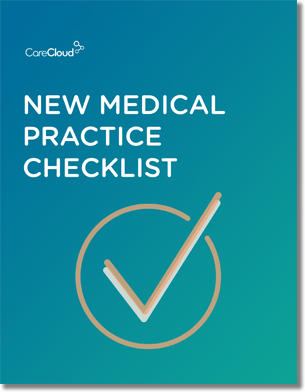Achieving a ROI on technology investments can be difficult – and even more so in the case of Electronic Health Record (EHR) software.
In other words, 73% of those surveyed failed to see a ROI. The financial implications of EHRs are about more than Meaningful Use (MU) checks, after all.
CHOOSE A PRODUCT THAT ENHANCES PROFITABILITY
The American Academy of Family Physicians (AAFP) 2012 EHR User Satisfaction survey reflected that only 38% of respondents were highly satisfied with their EHR systems. Productivity declines were a primary source of dissatisfaction – and, in turn, lower ROI.
Four attributes in particular help physicians make the most of their investment in an EHR system: high usability, capabilities for both charting and tasking, integration with practice management, and cloud-based delivery. This week, we cover the first two.
High usability
According to the HIMSS EHR Usability Task Force, usability is the “effectiveness, efficiency and satisfaction with which specific users can achieve a specific set of tasks in a particular environment.”
Despite a clear definition, as well as standards and benchmarks promoted by the Meaningful Use Incentive Program and other federal health IT initiatives, usability is a challenge for most EHR solutions. The 2012 American College of Physicians survey reflects this, reporting that 37% of doctors were dissatisfied with their system’s usability.
This is a glaring problem because the more time practices spend fighting technology, the less time they spend seeing patients. The alternative – sustain patient flow by spending late nights catching up on data entry – is equally disruptive.
What should a practice demand? From a functional perspective, EHRs should minimize the number of mouse clicks and screen openings it takes to get the job done. They should allow doctors to document the entire clinical encounter – from intake, to physical exam, to order fulfillment – within a single screen to save time and effort.
In addition, EHRs should be as intuitive and familiar as the websites and social media platforms that doctors already use in their daily lives. The result: greater familiarity and lower training requirements.
Finally, an EHR system should allow doctors to easily communicate with their staff and patients through social and chat capabilities that save time on back-and-forth exchanges while supporting more efficient, proactive care.
Ultimately, a more usable EHR helps practices work smarter, not harder – thereby reducing documentation times, increasing patient volumes, and driving higher revenues.
Capabilities for both charting and tasking
One of the key weaknesses of many EHRs is a singular focus on the clinical encounter. Many systems simply don’t support capabilities for tracking patient flow or managing office tasks, thereby creating bottlenecks for office staff as patients move from waiting room to exam room – then back to the front desk.
For instance, the American College of Physicians survey cited earlier also reported that 34% of respondents were “very dissatisfied” with their EHR’s ability to decrease workload, up 15% from 2010.
To avoid this pitfall, EHRs should support charting as well as intelligent workflow and tasking capabilities. This allows office staff to closely track patient wait times, exam room occupancy and overall flow through the office – avoiding problems such as underutilized resources or unnecessarily long encounters.
Furthermore, it is important an EHR manage the ancillary tasks that inundate practices daily (e.g., signing notes, reviewing lab results, approving medications, answering messages), a burden that only increases in complexity as the day progresses and new patients arrive.
Key capabilities such as unified mailbox systems in which doctors and staff can view and manage critical, one-off tasks, are essential.
By providing a cohesive view of what needs to get done, medical practices will waste less precious time looking for misplaced charts, waiting by the fax machine, or hunting around for lost patient information.
Stay tuned next week for the second installment of our whitepaper review series on the 3 essentials to achieving a positive ROI from your EHR.

Do you know what you need when setting up a new medical practice?



